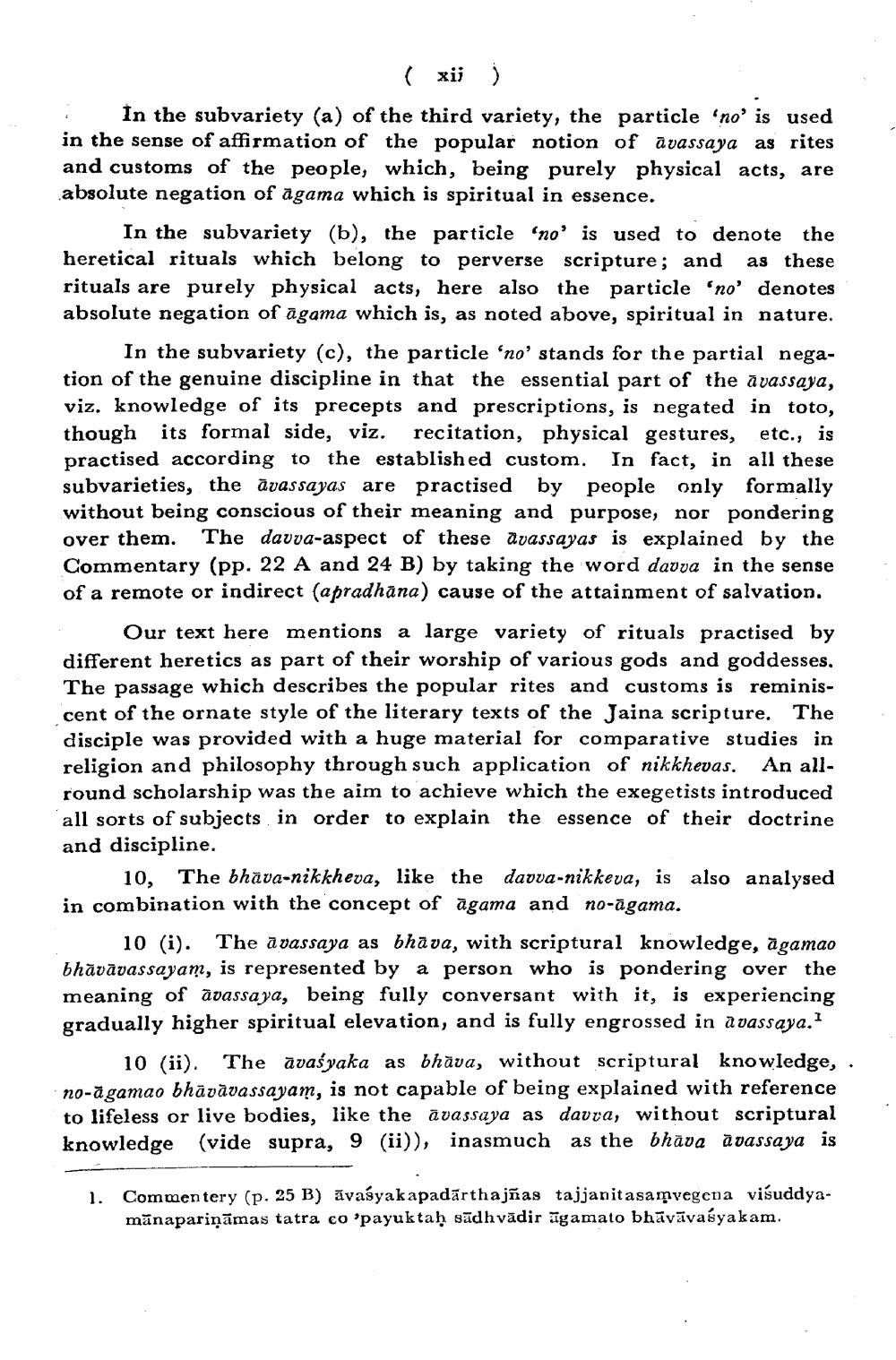________________
(xii
)
In the subvariety (a) of the third variety, the particle 'no' is used in the sense of affirmation of the popular notion of avassaya as rites and customs of the people, which, being purely physical acts, are absolute negation of agama which is spiritual in essence.
In the subvariety (b), the particle 'no' is used to denote the heretical rituals which belong to perverse scripture; and as these rituals are purely physical acts, here also the particle 'no' denotes absolute negation of agama which is, as noted above, spiritual in nature.
In the subvariety (c), the particle 'no' stands for the partial negation of the genuine discipline in that the essential part of the avassaya, viz. knowledge of its precepts and prescriptions, is negated in toto, though its formal side, viz. recitation, physical gestures, etc., is practised according to the established custom. In fact, in all these subvarieties, the āvassayas are practised by people only formally without being conscious of their meaning and purpose, nor pondering over them. The davva-aspect of these avassayas is explained by the Commentary (pp. 22 A and 24 B) by taking the word davva in the sense of a remote or indirect (apradhana) cause of the attainment of salvation.
Our text here mentions a large variety of rituals practised by different heretics as part of their worship of various gods and goddesses. The passage which describes the popular rites and customs is reminiscent of the ornate style of the literary texts of the Jaina scripture. The disciple was provided with a huge material for comparative studies in religion and philosophy through such application of nikkhevas. An allround scholarship was the aim to achieve which the exegetists introduced all sorts of subjects in order to explain the essence of their doctrine and discipline.
10, The bhāva-nikkheva, like the daova-nikkeva, is also analysed in combination with the concept of agama and no-āgama.
10 (i). The avassaya as bhava, with scriptural knowledge, agamao bhāvāvassayam, is represented by a person who is pondering over the meaning of āvassaya, being fully conversant with it, is experiencing gradually higher spiritual elevation, and is fully engrossed in a vassaya.
10 (ii). The avaśyaka as bhāva, without scriptural knowledge, . no-āgamao bhāvāvassayam, is not capable of being explained with reference to lifeless or live bodies, like the avassaya as davra, without scriptural knowledge (vide supra, 9 (ii)), inasmuch as the bhāva àvassaya is
1. Commentery (p. 25 B) āvasyak apadārthajñas tajjanitasamvegena viśuddya
mānapariņāmas tatra co 'payuktaḥ sādhvadir ügamato bhāvāvasyakam.




